If you’re embarking on a travel adventure, then you will inevitably want to make sure that the camera you take with you has the right capabilities to capture all those priceless moments. With the wrong camera, you may find it doesn’t do those poignant memories justice, and can even end up spoiling your trip.
Contents
If you’re embarking on a travel adventure, then you will inevitably want to make sure that the camera you take with you has the right capabilities to capture all those priceless moments. With the wrong camera, you may find it doesn’t do those poignant memories justice, and can even end up spoiling your trip.
However, each traveler will have different needs and requirements from their camera depending on where and what they want to photograph. There are numerous manufacturers and different types of cameras for travel on the market designed to suit different conditions and purposes as a travel camera. As a result, choosing the best travel camera that suits your needs can be a challenge.
Essentially, you need your travel camera to be lots of things – accessible, mobile, versatile and able to capture moments on the fly to store memories. To help you find the best travel camera, we’ve put together a helpful guide of the top 5 travel cameras that are suitable for tourists, world travelers and avid photographers alike.
In this guide you’ll not only find the top 5 best cameras for travel that cover compact cameras through to hi-tech DSLR and mirrorless travel cameras, you will also find a buying guide that will enable you to decipher which are the most important attributes for you to perfectly capture your traveling escapades.
Top 5 Travel Cameras…
To give you the greatest insight into buying the best camera for travel photography, we’ve put together 5 travel camera products that are not just based on technical specs, but also on up to date and genuine travel camera reviews. This should help to give you a good level of information and usability, to make the right decision on the best travel camera to meet your individual requirements.
Nikon D3300 24.2 MP CMOS Digital SLR
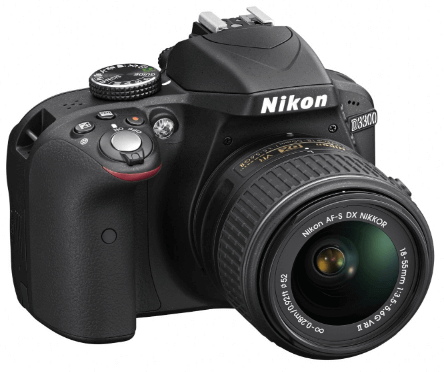
This camera rightly deserves the top spot as one of the best travel cameras on the market. Its price and extensive capabilities make it tough and versatile; ideal for those travelers who want to record every second of their trip.
It’s a great entry level camera, easily capturing life like images in the hands of amateur, yet it has enough functions to satisfy professionals too. The 24.2-MP camera and 1080p Full HD video will bring your holiday to life, whether shooting at hi-speeds with 5 frames per second using EXCEED 4, in low light with high ISO sensitivity or capturing stunning panoramic pictures.
It fits a variety of hi-powered zoom lenses, but when the lenses aren’t attached it’s light and easy to carry, making it the perfect travel companion. In addition to delivering high quality images, the Nikon D3300 camera also features smart phone connectivity and an optional WU-1a wireless adapter that allows you to upload and share your photos almost instantly.
One downside travelers may find with this Nikon travel camera is that the battery has to be removed for recharging rather than simply plugging into a computer or charging point. This may mean you need to purchase a second battery to avoid missing any photo downtime while you’re away. Secondly, if you’re a fan of point and shoot cameras, it’s worth bearing in mind that this DSLR camera does require more manual adjustments to get the right focus for the perfect photo.
Pros:
- 24.2-MP and HD Video with sound for life-like images
- Fits variety of hi-powered zoom lenses
- Light and easy to carry
- WU-1a Wireless Adapter and Smartphone connectivity
- Versatilefunctions for high speed, low light and panoramic images
- Great value and power for the price
Cons:
- Battery has to be removed for charging
- Can be time consuming to adjust the lens focus
Canon EOS 80D DSLR Camera
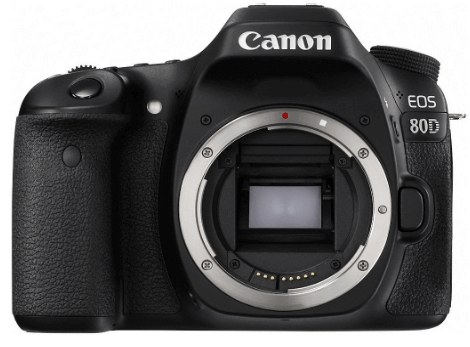
The Canon EOS 80D DSLR travel camera is another fantastic choice if you’re looking to take exceptional photographs while traveling. The solid body, plentiful control options and weather seal make it robust and adaptable for traveling almost anywhere. The AF (auto focus) features allow for high speed, high precision photography in almost any light; delivering sharp, high quality images and video via the 24.2-MP camera CMOS Sensor with DIGIC 6 image processor, as well as Full HD 1080p video recording.
It comes with a range of features and functions that are best suited to experienced photographers, but are still great fun to play around with, even for novices. These include the Intelligent Viewfinder, a 3.0” Vari-Angle Touchscreen and built-in wireless connectivity, allowing you to easily capture pictures on your travels and upload them from your camera right away.
This camera comes with a variety of optional accessories, including tripods, screen protectors, remote controls and a variety of hi-powered zoom lenses for better focus and clarity. This camera along with all its possible accessories features the best RAW dynamic range of all the APS-C Canon cameras to bring your travel photos to life.
Pros:
- 24.2-MP camera and Full HD 1080p video
- Comes with a wide range of dynamic control options
- Adaptable to almost any light
- Delivers high quality image and video
- AF capability for high speed and precision
- Wide range of accessories available
Cons:
- Expensive to buy
- The vast array of functions may be overwhelming for inexperienced photographers
Canon EOS Rebel T6 Digital SLR Camera
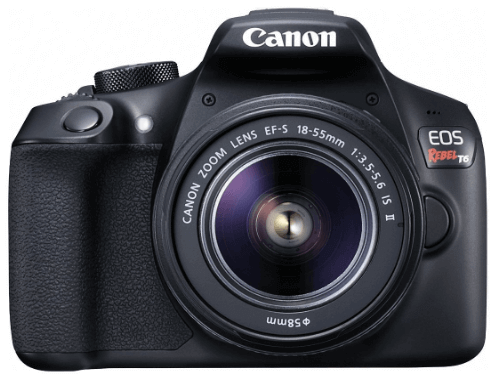
This canon travel camera has plenty to offer beyond its affordability. It features a DIGIC 4+ high performance image processor with 18-megapixel CMOS (APS-C) image sensor that captures high quality images with very little effort or technical ability. This makes it great for beginners and professional photographers on the go.
It’s also one of the best cameras for travel as it’s lightweight and easy to carry while traveling around and is designed for shooting in bright light through to low light, making it versatile too. The 9 point AF system and AI Servo AF also make it ideal for capturing a fleeting moment in a vivid setting, while the optical viewfinder provides quick and easy focusing and stability.
As an added bonus, this canon travel camera also comes equipped with Wi-Fi and NFC connectivity, allowing easy and simple uploading and sharing of your photos on social media.
The downside is that many of the features in the Revel T6 are outdated. So while it still takes a solid photo and has plenty of scope for both automatic and manual shooting modes, it doesn’t feature panoramic, slow-motion video or in-camera filters, which may limit it to amateurs rather than professional photographers.
Pros:
- Very affordable and good value
- Lightweight camera that’s easy to carry
- Good usability and functions
- Wi-Fi and NFC connectivity for quick uploading of photographs
Cons:
- It doesn’t have as many features or capabilities as other newer DSLR cameras
- The 18-MP sensor may be limiting to more experienced photographers
- Built for viewfinder shooting – doesn’t have a Hybrid autofocus system, which slows the Live View autofocus down
Panasonic LUMIX GX85 4K Mirrorless
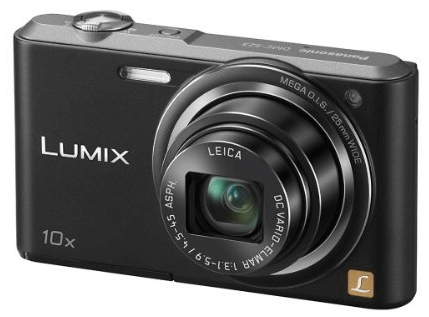
The beauty of this Panasonic Lumix Mirrorless travel camera is that you have the ability to shoot faster and lighter with the high performance of a mirrorless camera, but with almost half the weight and bulk of a DSLR travel camera.
With a 5-axis in-body stabilizer it also has optically stabilized lenses for better shake reduction, and video and still capture modes to deliver high quality images with a 16-MP Sensor resolution. The Depth from Defocus AF system provides fast focus times and depth tracking and the tilting touchscreen can also be used as an AF function if you’re using the viewfinder.
With the 4K imaging performance users can capture fast and spontaneous moments that inevitably occur while traveling, which can be in 4K video or 4K photo mode. They can also make use of the Post Focus feature.
Despite the retro-styled design that unfortunately isn’t weather sealed,, the GX85 comes with plenty of additional modern features, including thumbwheel controls, integrated viewfinder and touch control, but it doesn’t come with any microphone or headphone ports, and some of the controls buttons are small, which may be problematic for large handed photographers.
Pros:
- Lightweight and compact camera, ideal for traveling light
- High performance mirrorless camera with abundance of features
- Dual Image Stabilization with 5-axis in-body stabilizer and LUMIX-2 optical lens stabilizer
- 4K imaging performance for fast shooting in video and photo modes
- High-tech control features – including thumbwheel, integrated viewfinder and touch control
Cons:
- Not weather sealed against dust or moisture
- Small control buttons can be fiddly
- No microphone or headphone port
- No Wi-Fi connectivity
Panasonic Lumix DMC-SZ3 16.1 MP Compact Digital Camera
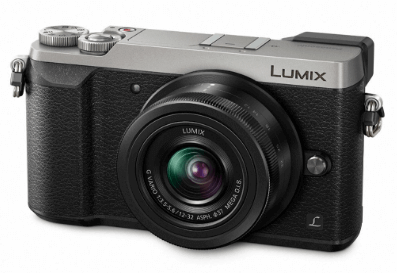
If you’re looking for the best compact camera for travel, then you can’t go wrong with the Panasonic Lumix DMC-SZ3. Its slim body makes it lightweight and compact enough to carry easily in your pocket or bag so it’s always to hand. With a 16.1MP Sensor and impressive 20x Intelligent Zoom feature, you can take fantastic high-quality images both up close and far away, which you may not expect from such an unassuming point and shoot camera. With a number of settings and effects available, users can also easily control the look of images on the fly, and it even shoots HD video.
The cameras iA (Intelligent Auto) mode and various easy to use presets are great for shooting in shaded areas, bright settings or tracking moving subjects. To add to that it also features a 25mm ultra wide-angle lens that provides double the shooting area, which is what makes it one of the best travel cameras on the markets. Furthermore, the additional features like the MEGA O.I.S (Optical Image Stabilizer) will work automatically to compensate for hand shakes to make sure you’re not left with blurry photographs.
This travel camera can also be easily re-charged using a USB port or AC USB adapter, allowing you to always make sure your camera is fully charged while you’re on the go and it takes standard SDHC cards that are easy to install and obtain while away.
Pros:
- Slim line and lightweight design make it easy to carry around
- 20x Intelligent Zoom capacity
- Selection of preset effects and settings using iA mode
- 25mm ultra wide-angle lens
- Features O.I.S. for improved shake reduction
- Easy to recharge with USB port or adapter
Cons:
- There is no Quick Access Button that features in other Panasonic cameras
- It can also be known to struggle with low-light photos
- Doesn’t offer very much manual control that more experienced photographers may prefer
Travel Camera Buyers Guide
Now we’ve told you which are the top 5 best cameras for travel on the market right now, it’s time to let you know how to figure out which one will be the most suitable for your needs.
What may sound like the best travel camera in the world in terms of specs, may in fact be well beyond what you actually need it for and vice versa.
You will no doubt want to invest in a high quality camera, but without properly considering what you need it for and the purpose of your trip, you may find you under or over pay for a lot of functions that you may or may not need.
Furthermore, if you choose the wrong travel camera, it can not only lead to missed photo opportunities and low quality pictures, but also frustration that your can’t take the photos you want.
For example, if you’re planning a short break away and you simply want to take the average holiday snaps with very little hassle, you may do well to simply use your Smartphone camera or possibly invest in a small all-purpose compact digital camera.
These are generally designed to be:
- Lightweight
- Compact
- Discreet
- Portable
while also providing a number of versatile functions that even an inexperienced photographer could enjoy and benefit from.
On the other hand if you’re a keen photographer, or heading to a destination with particular weather conditions or activities that may require a more sophisticated and specific camera with more functions and capabilities, a DSLR or mirrorless camera may be the better choice.
When figuring out which is the best camera for travel in your situation, firstly it’s important to understand the options available to you, then you can begin assessing the nature of your trip.
To give you a better understanding of the types of camera available from the best travel camera brands such as Nikon, Canon and Panasonic, here’s a brief summary of the different camera types and what they are best suited for. You can then go on to figure out which type of camera will be best suited for your time away.Premium CompactDSLRMirrorlessIf you’re looking for the best small camera for travel that will also take quality hi-resolution images, then you’re best to go a notch above the budget models and invest in a premium compact camera.
They are a great solution for keen photographers on the go who need a good quality lens and a travel camera with plenty of functions and versatility, without the extra hassle and weight of lugging around a bulky DSLR model. The best compact cameras in this category will provide automated sensors and manual controls for those who know their way around shutter speeds, aperture and ISO.
They have the ability to shoot RAW images, as well as JPEGS, however they don’t have changeable lenses for different images, which can limit those looking for more creative shots.
For those serious about photography that prioritize quality photos over luggage space and weight, the DSLR is the way to go. As a professional photographers workhorse they are typically used by photojournalists on assignments out in the field.
These cameras are generally much larger than the compact versions and require special carrying cases to protect the camera and accessories such as changeable lenses. They also need to be well-maintained, which can be a downside. Modern DSLR cameras are equipped with plenty of new technology, as well as analog camera features and manual settings, to get just the right picture.
This blend of analog features and hi-tech specs affords greater flexibility and creativity to adapt to a variety of shooting environments and conditions. But their size and bulkiness is often seen as a downside and they’re being replaced by smaller, lighter mirrorless models.
The mirrorless camera is a new breed that combines all the functionality and specs of traditional DSLR cameras, in a much more compact and mobile form. This makes it one of the top choices for the best travel camera for anyone who’s serious about their photography.
With plenty of features that professionals can appreciate, it’s much smaller than a DSLR, but still fits a variety of lenses with the benefit of digital viewfinders. They deliver superior focus aperture and shutter controls like a DSLR with sensors and presets for shooting on the go, but as a relatively new technology they are expensive.
Furthermore, with additional lenses, they still pose a weight and space problem if you need to be traveling light.
Assessing the essential
With a better understanding of the types of cameras available to travelers, it’s now time to weigh up which essential features are priorities when it comes to choosing the best camera for travel.
Need
First of all consider what you need from your camera – the types of photographs you anticipate you’ll be taking and where. If you think you’ll simply be taking holiday shots with people and a few scenery shots then a standard Smartphone or compact camera will do. However, if you want to get creative with your travel photography then stepping up to a premium compact, DSLR or mirrorless model will be a better choice.
Versatility
You also need to consider the versatility you will need from your camera. The premium compact, DSLR and mirrorless will all offer more versatility to take hi-resolution photographs and bring your pictures to life. But inevitably they are more expensive and with the DSLR and mirrorless they will also be bulkier, but they will inevitably give you more features and adaptability for different conditions, such as low light or movement tracking.Portability and weight
If you’re going to be doing a lot of traveling around, carrying luggage or trekking for example, then choosing a lighter weight premium compact camera over a heavier DSLR will make more sense. Also it will take up less room in your luggage than cameras that have changeable lenses and more accessories; and you can carry it in your pocket or bag to always have it close to hand.
Discreetness
Another factor to think about is how discreet you want your camera to be. Having a hi-tech camera around your neck will definitely make you stand out in a crowd, but can also potentially make you a target for theft. Not only that, but certain situations require a more subtle approach to photography, so a smaller camera can be a little less intrusive.
Resolution
If you’re serious about photography then image resolution is always going to play a major factor in your choice of camera. The bog-standard compact camera is unlikely to give you the hi-resolution images you desire, so you will probably prefer a DSLR that delivers better pixel resolutions and offers more versatility.
Usability
Another fundamental element of buying a camera that is often overlooked is its usability. While you may want as many features on it as possible to take outstanding photographs, if they aren’t easy to use or navigate then it’s unlikely you’ll get the best from the camera. Try to sift through the options by reading travel camera reviews; people actually using the cameras will be better able to tell you if it’s easy to use or not.
Smartphone or Budget Compact Camera?
These options are likely to be the most accessible options while traveling. They are easy to carry around in your pocket or bag and certainly in the case of your phone, it’s almost always likely to be close to hand and easy to reach to capture spur of the moment photographs on a hike or in a busy market.
Furthermore, these options are probably the most affordable, as a simple budget compact camera that does the basics doesn’t cost much these days and many of us will already own a Smartphone, so it can eliminate the cost of buying a camera all together.
However, there are advantages to having a separate budget compact camera if you want to take better quality photos. A decent budget compact camera will inevitably have better image resolution, superior zoom capabilities and will also work in low light conditions to produce better quality images.
That being said, as many of us will already own a Smartphone you can still save money on investing in a budget travel camera that doesn’t really do much more than your phone. This is particularly true if you’re not looking to take any technically challenging photographs or don’t have much experience behind the lens.
Although some people do prefer the feel of a camera in hand rather than a phone, and you will naturally get superior photos. But if that’s a priority you may actually be better spending a little more on a higher-spec premium compact camera model instead.
Conclusion
With so many different brands and models on offer, it’s no wonder the decision of finding the best camera for travel is a difficult one. However, before you splurge your hard earned dollars on the most expensive camera, always take the time to figure out which are the essential features and options you need your travel camera to have and which types will suit your traveling circumstances.
Also, be sure to read travel camera reviews, as these ‘real’ assessments of cameras can help separate the heavy and expensive burdens from the reasonable, mobile and easy to use travel cameras. The last thing you want is bad pictures to cloud happy memories.
